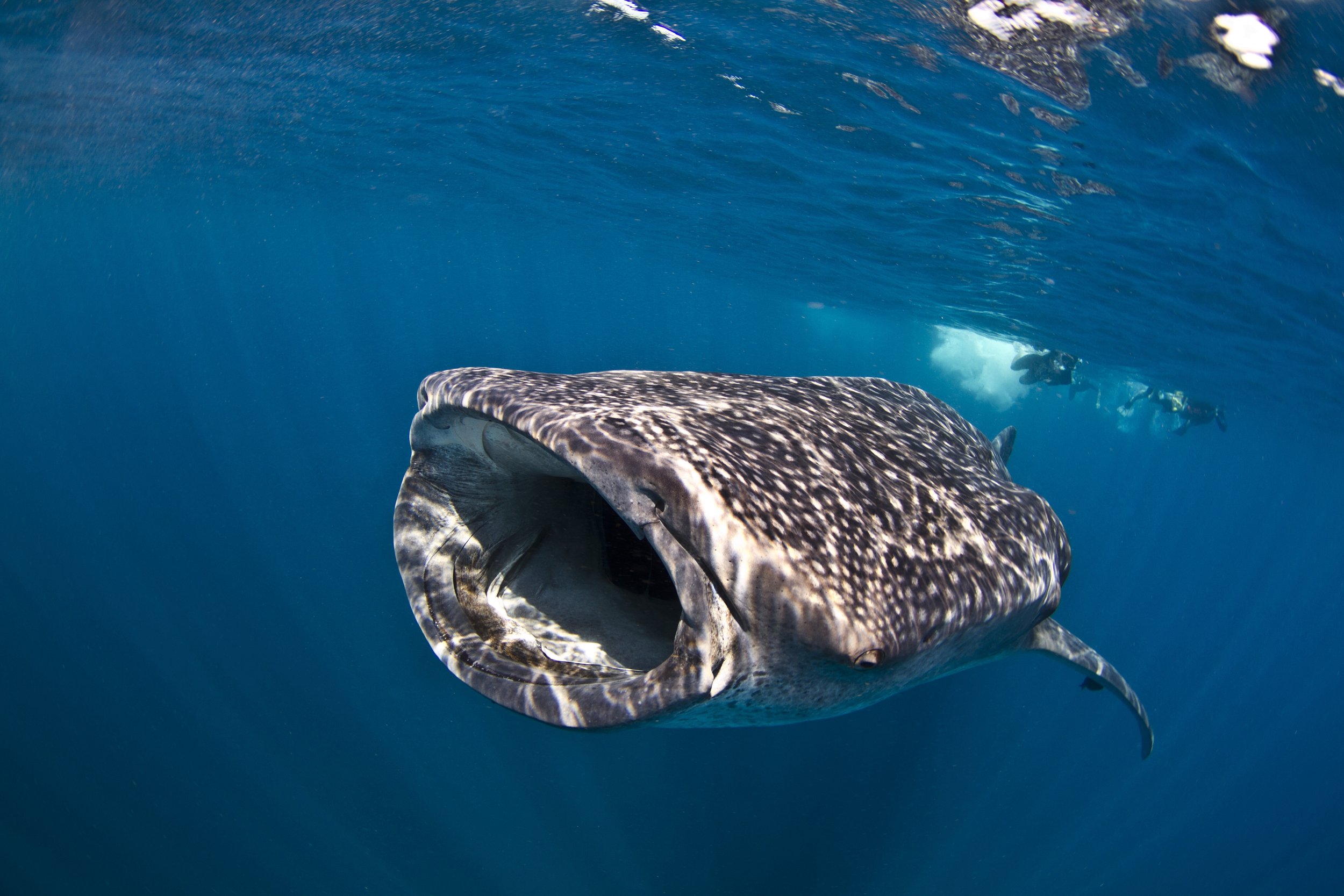Whale shark (Rhincodon typus) swimming with its mouth open to filter feed.
Squalomix dives into underwater sight
The whale shark (Rhincodon typus) has developed a remarkable way of seeing underwater, allowing it to navigate habitats that span the entire water column. To thrive in such varied environments, its eyes must adapt to dramatically different light conditions (Tamisiea, 2023). Researchers with Squalomix studied complete shark genomes and discovered gene mutations that help the whale shark adjust to low-light settings. Their work shows that vision in this species is influenced by water temperature: in colder, deeper waters, pigments tuned to blue light are switched on, enhancing dim-light vision (Yamaguchi, et al., 2023). Near the warmer surface, those same pigments are turned off. This temperature-sensitive system highlights how evolution has refined sensory mechanisms to support survival across the ocean’s shifting environments (Yamaguchi, et al., 2023). Squalomix researchers emphasize that this is only the beginning of the story. As more high-quality genomes of sharks, rays, and other aquatic species are produced, they hope to build a clearer picture of the genetic foundations of vision and deepen our understanding of how creatures of all sizes perceive life in the ocean’s dimly lit depths.
Whale shark swimming in sunlit surface waters.



